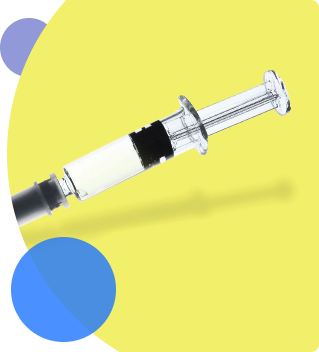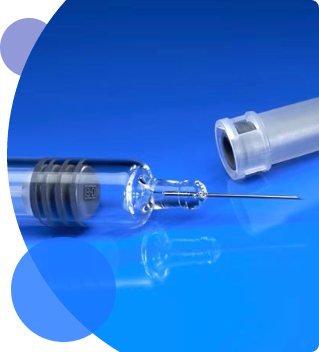Overcome drug-container interaction challenges with ZebraSci’s analytical testing services
Evaluate compatibility of the drug with primary container and generate data in a GMP Lab to support drug combination product regulatory submission.
ZebraSci understands the needs of analytical testing in the combination product journey. Our testing can range from measuring potential particle generation, drug product stability, silicone interaction with drug products and more. We are staffed and well equipped globally to cater to your needs.
Our experienced team can guide you through test method selection, development and establishment of acceptance criteria to meet regulatory expectations.
Offering informed and independent guidance, customers can work with ZebraSci through each phase of the product lifecycle. Rest assured, we understand and posses the capabilities our customers desire to ensure efficiency, reliability, and safety, from concept to commercialization.

If you need more information, contact us
Request Consultation
What is your request?
VIEW CAPABILITIES
Sub-visible particles
Sub-visible particles
- Measure potential particle generation within the container due to drug product interactions with container elements (e.g. silicone)
- Sensitive proteins may face undesirable protein aggregation due to physical or chemical interaction with silicone particles. These interactions can trigger, unfold and progressively lead to form protein aggregates
- Other times, silicone droplets can migrate from the inner syringe barrel or be exacerbated due to reactions with the drug protein. This can lead to silicone emulsification and lead to high concentration of silicone oil droplets in the drug product
- While silicone oil droplets have been demonstrated to not cause serious safety concerns, an excessive concentration in the drug product solution can be challenging from a regulatory perspective to meet pharmacopeia limits (USP 788)
Extractables & leachables
Extractables & leachables
- Performed to better understand what checmical species could make its way into your drug product over shelf life
- Extractables CAN likely migrate into the drug product, Leachables likely DO migrate into the drug product
- For extractables study, drug product or placebo will be placed under exaggerated conditions, such as acidic, basic, organic, and aqueous solvent, to force extraction. Detected compounds will be reported out to provide first insight on potential system toxicity
- For leachables study they are performed at normal product, application, and storage conditions. Measured compounds at the end of testing will be reported

Tungsten interactions
Tungsten interactions
- Tungsten-spiking studies performed to identify potential protein aggregation, denaturation, and drug product stability
- Tungsten pins are typically used in the manufacturing process of glass pre-filled syringes during the forming of the syringe tip at high temperatures
- After the washing process, traces of tungsten salts and tungsten species can remain in the syringe tip
- The water-soluble tungsten oxide can be a concern for some drug products and only through a spiking study, can potential interactions be understood

Siliconization characterization and interactions
Siliconization characterization and interactions
- Through the Flex HD, S, and P systems, we can characterize the silicone layer profile of your primary container
- Creation of 2D and 3D models of the silicone layer distribution to understand uniformity of the silicone layer inside a primary container
- Silicone coverage and migration depending on syringe tip orientation (tip up, down, horizontal) can be assessed to accommodate your intended storage orientation

Camera inspection systems
Camera inspection systems
- ZebraSci uses a custom, automated multi-axis vision measurement system for complete dimensional characterizations of both the interior and exterior of primary containers such as syringes, cartridges and vials. Empty or product filled containers can be measured in the X, Y and Z axis with sub 10-micron accuracy.

Other tests
Other tests
- pH, purity/impurity, endotoxin, identity testing, sterility, viscotiy, excipients, color, moisture testing, density, atomic absorption spectroscopy (AAS), protein quantity

